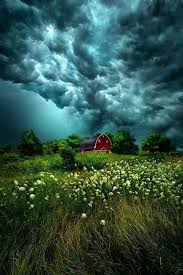Twin Meteor Showers Light Up July Skies as Monsoon Rains Intensify Across India

The Indian skies presented a stunning spectacle last night as two meteor showers the Southern Delta Aquariids and Alpha Capricornids — peaked together, offering skywatchers a rare celestial treat. While the heavens dazzled, parts of the country continued to grapple with heavy monsoon rainfall, landslides, and flood alerts, particularly across Himachal Pradesh, Uttarakhand, Assam, and Maharashtra.
This remarkable intersection of astronomical wonder and natural weather turbulence reflects both the awe and adversity that nature brings reminding us of the need to stay both enchanted and prepared.
Twin Meteor Showers Peak on July 29–30
The Southern Delta Aquariids and the Alpha Capricornids, two prominent meteor showers, peaked during the night of July 29 into the early hours of July 30. Skywatchers across India particularly in rural and less light-polluted areas — witnessed 20–25 meteors per hour, with occasional bright fireballs lighting up the dark sky.
Both showers originate from debris left by comets:
Southern Delta Aquariids: Originates from Comet 96P/Machholz
Alpha Capricornids: Believed to come from Comet 169P/NEAT
This year’s viewing conditions were especially favorable due to the new moon phase, meaning the sky was dark and clear in many regions, except those affected by monsoonal clouds.
“It’s rare to have both showers overlapping with such clarity. The absence of moonlight offered perfect conditions for observation,” said Dr. Nisha Sharma, Senior Astronomer at the Indian Institute of Astrophysics.
Astronomy groups and amateur skywatchers across Ladakh, Rajasthan, and parts of Karnataka organized viewing events and livestreams, sparking increased interest in space and night-sky photography.
Monsoon Rains Continue to Disrupt Normal Life
As the night skies delivered magic, the day brought relentless rain. India’s southwest monsoon, now in its peak phase, continued to wreak havoc in multiple states.
Himachal Pradesh & Uttarakhand:
Landslides blocked major highways including the Chandigarh–Manali route, stranding tourists and disrupting local commerce.
Yellow and orange alerts were issued by the IMD (India Meteorological Department) for multiple districts due to continued rainfall and risk of flash floods.
Assam & Northeast:
Over 300,000 people have been affected by flooding across 9 districts in Assam.
River Brahmaputra and its tributaries are flowing above the danger mark in several regions.
Maharashtra:
Mumbai and surrounding areas received over 180 mm of rainfall in the past 24 hours.
Waterlogging disrupted local train services and road traffic, especially in low-lying zones like Dadar, Andheri, and Kurla.
“The monsoon pattern this year is both intense and erratic. Climate models show increasing variability, especially in the Himalayan belt,” said Dr. R.K. Sinha, a meteorologist at IMD Pune.
Nature’s Dual Face: Awe and Alarm
July 2025 has demonstrated nature’s dual character — from the mesmerizing night sky to the unpredictable fury of rain and floods. Experts suggest that these seemingly disconnected events underline a larger truth: the need to reconnect with nature while preparing for its changing moods.
Climate scientists point to key patterns:
Rising global temperatures have intensified the Indian monsoon, increasing both rainfall volume and frequency of cloudbursts.
Astronomical events like meteor showers are becoming more visible in India due to improved light pollution management in some regions, especially around observatories.
Safety and Citizen Guidelines
With the monsoon in full swing and weather disturbances expected to continue for at least 10 more days, citizens are advised to:
Avoid travel to hilly regions in Himachal, Uttarakhand, and Northeast states unless necessary.
Follow IMD weather alerts on their official app and social media.
Participate in local astronomy clubs and online sessions to safely observe night-sky events.
In flood-prone zones, keep emergency kits ready, including clean water, torches, dry food, and essential documents.
What’s Next in the Sky?
After the dual meteor shower spectacle, stargazers can look forward to:
Perseid Meteor Shower in mid-August, which promises up to 60 meteors per hour at its peak.
Saturn Opposition on August 27 when the ringed planet will be at its brightest and closest to Earth.
Conclusion
Nature offered a celestial gift on July 30 with glowing meteor trails across Indian skies — even as it continued to challenge people on the ground with relentless rain and landslides. As India balances between admiration and adaptation, one thing remains clear: being attuned to both the skies above and the soil below is essential for a resilient future.
SEO Keywords:
India meteor shower July 2025, twin meteor shower 29-30 July, Alpha Capricornids India, Southern Delta Aquariids peak time, India monsoon rain update July, Himachal landslide today, Assam flood news July 2025, weather forecast July 30 India, Indian skywatch events 2025, IMD alerts July 2025.





